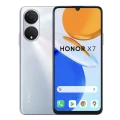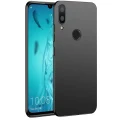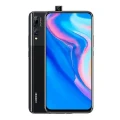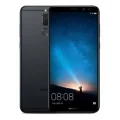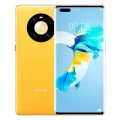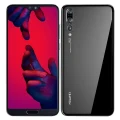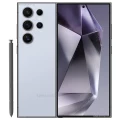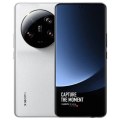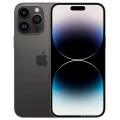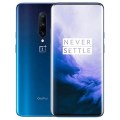- Awesome page
- Latest Mobile
- Smartphones
- Google Pixel 4
Google Pixel 4
Google Pixel 4 Price in Bangladesh
The Google Pixel 4 Price in Bangladesh is BDT 71,000. This smartphone features a 5.7-inch P-OLED capacitive touchscreen with a resolution of 1080 x 2160 pixels and a pixel density of ~424 PPI, delivering sharp visuals. The Google Pixel 4 is powered by the Qualcomm SDM855 Snapdragon 855 processor, coupled with 6GB of RAM and either 64GB or 128GB of internal storage, though it does not support external storage. The rear camera setup includes 12.2 MP and 16 MP sensors, while the front houses an 8 MP camera and a TOF 3D sensor. Powered by a 2800mAh Li-polymer battery, the Google Pixel 4 provides solid performance, excellent camera quality, and a sleek design.
Specifications
General
| Model | Google Pixel 4 |
| Announced | 2019, October |
| Released | 2019, October |
| Status | Available |
| Unofficial price | 6GB 64GB ৳84,000 / 6GB 128GB ৳94,000 |
Design
| Dimensions | 147.1 x 68.8 x 8.2 mm (5.79 x 2.71 x 0.32 in) |
| Weight | 162 g (5.71 oz) |
| Colors |
Clearly White, Just Black, Oh So Orange |
Network
| Technology | GSM / CDMA / HSPA / EVDO / LTE |
| 2G Network |
GSM 850 / 900 / 1800 / 1900 CDMA 800 / 1900 |
| 3G Network |
HSDPA 850 / 900 / 1700(AWS) / 1900 / 2100 CDMA2000 1xEV-DO |
| 4G Network | LTE band 1(2100), 2(1900), 3(1800), 4(1700/2100), 5(850), 7(2600), 8(900), 12(700), 13(700), 14(700), 17(700), 18(800), 19(800), 20(800), 25(1900), 26(850), 28(700), 29(700), 30(2300), 38(2600), 39(1900), 40(2300), 41(2500), 46(5200), 48, 66(1700/2100), 71(600) - USA |
| GPRS <strong>GPRS</strong> (General Packet Radio Service) is a packet oriented mobile data service on the 2G and 3G cellular communication system's global system for mobile communications (GSM), Generally, GPRS is used for the purpose of wireless data transfer, such as sharing pictures and videos or browsing the Internet via a mobile phone connection. | |
| EDGE <strong>EDGE</strong> (Enhanced Data GSM Environment) is a wireless network technology generally considered the next step in the 2G network offers data transfer rates up to four times faster than ordinary GSM networks, Generally, EDGE is used for the purpose of wireless data transfer, such as sharing pictures and videos or browsing the Internet via a mobile phone connection. | |
| Speed | HSPA 42.2/5.76 Mbps, LTE-A (4CA) Cat18 1200/150 Mbps |
Display
| Display Type <strong>Display Technology => </strong> A number of display technologies and types used in mobile phones => TFT (Thin Film Transistor), IPS (In-Place Switching), OLED (Organic Light Emitting Diode), AMOLED (Active-Matrix Organic Light-Emitting Diode), Super AMOLED (an even advanced version of AMOLED), Resistive Touchscreen (Resistive touchscreens contain two layer of conductive material with a very small gap between them which acts as a resistance), Capacitive Touchsceen (Capacitive touchscreen technology consists of a layer of glass coated with a transparent conductor) | P-OLED capacitive touchscreen, 16M colors |
| Size | 5.7 inches, 83.8 cm2 |
| Resolution | 1080 x 2220 pixels, 18.5:9 ratio (~444 ppi density) |
| Features |
Corning Gorilla Glass 5 DCI-P3 100%HDRAlways-on display90Hz90Hz |
Camera
Main camera
| Camera Setup | Dual |
| Primary <strong>Camera</strong> is able to capture photographs and usually videos, The most important characteristics of a camera are the resolution (measured in megapixels), lens focus type (fixed or automatic), higher megapixel cameras are known to capture higher quality photos, but not always a good measurement of the photos quality. |
12.2 MP, f/1.6, 28mm (wide), 1/2.55&amp;quot;, 1.4µm, dual pixel PDAF, OIS 16 MP, (telephoto), dual pixel PDAF, OIS, 2x optical zoom |
| Features |
Dual-LED flash, Auto-HDR, panorama |
| Video | 2160p@30fps, 1080p@30/60/120fps, 720p@240fps, 1080p@30fps (gyro-EIS) |
Selfie camera
| Camera Setup | Single |
| Primary <strong>Camera</strong> is able to capture photographs and usually videos, The most important characteristics of a camera are the resolution (measured in megapixels), lens focus type (fixed or automatic), higher megapixel cameras are known to capture higher quality photos, but not always a good measurement of the photos quality. |
8 MP, f/2.0, 19mm (ultrawide), no AF TOP 3D camera |
| Features |
Auto-HDR |
| Video | 1080p@30fps |
Hardware
| Chipset <strong>Chipset</strong> is a group of integrated circuits designed to perform one or a more dedicated functions, often with real time computing constraints, Popular smartphones are equipped with more advanced embedded chipsets that can do many different tasks depending on their programming. | Qualcomm SDM855 Snapdragon 855 |
| CPU <strong>CPU</strong> (Central Processing Unit) mostly known as processors, CPU processes instructions in order to carry out certain functions that make your device operate properly. Processors are often described as the brain of computers, smartphones and tablets, Smartphones and tablets rely on processors to carry out their every task, Processors are an incredibly important factor in selecting any type of computing device, including your smartphone. | Octa-core (1x2.84 GHz Kryo 485 & 3x2.42 GHz Kryo 485 & 4x1.78 GHz Kryo 485) |
| GPU <strong>GPU</strong> (Graphics Processing Unit) is a single-chip processor designed to rapidly manipulate and alter memory to accelerate the creation of images in a frame buffer intended for output to a display, This includes things such as lighting effects, object transformations, and 3D motion. | Adreno 640 |
| RAM (Memory) <strong>RAM</strong> (Random Access Memory) is a type of computer memory that can be accessed randomly, any byte of memory can be accessed without touching the preceding bytes that allows information to be stored and accessed quickly from random locations. RAM is the most common type of memory found in computer systems, smartphones, tablets and other electronic devices. | 6 GB |
| Internal Storage <strong>Internal Storage</strong> is a data storage space (flash memory) mostly used in smartphones, tablets and other electronic devices where operating system, apps, music, photos, videos, files and other user data Is stored. | 64/128 GB |
| Sensors <strong>Sensors</strong> are electronic components that detects and responds to some type of input from the physical environment. The specific input could be light, heat, motion, moisture, pressure and location, The output is generally a signal that is converted to use in computing systems, a location sensor, such as a GPS receiver is able to detect current location of your electronic device. |
Face ID, accelerometer, gyro, proximity, compass, barometer |
Connectivity
| Bluetooth <strong>Bluetooth</strong> is a wireless communications technology for exchanging data between mobile phones, headsets, computers and other network devices over short distances without wires, Bluetooth technology was primarily designed to support simple wireless networking of personal consumer devices. | 5.0, A2DP, LE, aptX HD |
| Infrared <strong>Infrared</strong> connectivity is an old wireless technology used to connect two electronic devices. It uses a beam of infrared light to transmit information and so requires direct line of sight and operates only at close range. | |
| USB | 3.1, Type-C 1.0 reversible connector |
| GPS <strong>GPS</strong> The Global Positioning System is a satellite-based radio navigation system, GPS permits users to determine their position, velocity and the time 24 hours a day, in all weather, anywhere in the world, In order to locate your position, your device or GPS receiver must have a clear view of the sky. | Yes, with A-GPS, GLONASS, BDS, GALILEO |
| NFC <strong>NFC</strong> (Near field communication) is a set of standards for smartphones and similar devices to establish peer-to-peer radio communications with each other by touching them together or bringing them into proximity, usually no more than a few inches. |
Battery
| Battery Type <strong>Battery Type => </strong> Cell phones run on various kinds of batteries depending on the manufacturer, phone size or shape and features. There are basically four types of cell phone batteries => Lithium Polymer, Lithium Ion, Nickel Metal Hydride and Nickel Cadmium. | Non-Removable Li-Po |
| Capacity <strong>Battery Capacity</strong> is a measure (typically in Amp-hr) of the charge stored by the battery, and is determined by the mass of active material contained in the battery. The battery capacity represents the maximum amount of energy that can be extracted from the battery under certain conditions. | 2800mAh Li-Po |
| Charging Charging | Fast battery charging 18W USB Power Delivery 2.0 QI wireless charging |
The Google Pixel 4 Experience You Need to Know About
Google’s Pixel phones have carved out a niche for themselves among tech enthusiasts and smartphone users who value a pure Android experience. The Pixel 4, with its innovative features and standout performance, is no exception. In this review, we’ll explore everything you need to know about the Google Pixel 4, from its design and display to its camera capabilities and unique features.
A Brief History of the Google Pixel 4
The Pixel 4 continues the legacy of Google’s flagship phone series, which began with the original Pixel in 2016. Known for their exceptional camera quality and clean Android experience, Pixel phones have always been a favorite among tech-savvy users. The Pixel 4 aims to build on this reputation with new features and improvements.
Since its launch, the Pixel 4 has made waves in the smartphone market. Google has positioned it as a premium device, competing with the likes of Apple’s iPhone and Samsung’s Galaxy series. But how does it stack up? Let’s find out.
Design and Display
The Google Pixel 4 sports a sleek and modern design that immediately catches the eye. With a matte finish on the back and a glossy rim, the phone feels both sturdy and premium in hand. The device is available in three colors: Just Black, Clearly White, and the limited edition Oh So Orange.
One of the standout features of the Pixel 4 is its 5.7-inch OLED display. The screen boasts a resolution of 1080 x 2280 pixels, delivering sharp and vibrant visuals. The 90Hz refresh rate ensures smooth scrolling and an overall more responsive touch experience, making it a joy to use for browsing and gaming alike.
The Pixel 4 also features a more pronounced “forehead” bezel, housing the sophisticated facial recognition system and radar sensor. While some may find it less aesthetically pleasing compared to notch-less designs, the trade-off for the added functionality is well worth it.
Camera Capabilities
Google’s Pixel series has always been synonymous with exceptional camera performance, and the Pixel 4 is no different. With a dual-camera setup at the rear—a 12.2 MP primary sensor and a 16 MP telephoto lens—the phone captures stunning photos in various lighting conditions.
The Night Sight feature allows for breathtaking low-light photography, making it possible to capture clear and detailed images even in near darkness. The addition of Super Res Zoom enhances zoomed-in shots, reducing noise and improving clarity.
The front-facing camera, an 8 MP sensor, also delivers high-quality selfies and supports Google’s new face unlock feature. For video recording, the Pixel 4 offers 4K resolution at 30 frames per second, ensuring your memories are captured in stunning detail.
Performance and Battery Life
Under the hood, the Pixel 4 is powered by the Qualcomm Snapdragon 855 processor, coupled with 6 GB of RAM. This combination ensures smooth performance across various tasks, from multitasking to gaming. The phone comes with two storage options—64 GB and 128 GB—though it lacks expandable storage, which might be a drawback for some users.
Battery life has been a concern for many Pixel 4 users. Equipped with a 2800 mAh battery, the phone struggles to last through a full day of heavy usage. However, Google’s adaptive battery feature helps optimize power consumption by learning your usage patterns and prioritizing essential apps.
Fast charging and wireless charging are supported, allowing you to quickly top up the battery when needed. Despite its modest battery capacity, the Pixel 4’s efficient power management ensures you can make it through most of the day without too much worry.
Unique Features and Innovations
The Google Pixel 4 is packed with unique features that set it apart from other smartphones. One of the most talked-about innovations is the Soli radar motion sensor. This tiny radar chip allows you to control the phone with simple hand gestures, such as skipping songs or silencing calls without touching the device. While still in its early stages, this technology shows great potential for future applications.
Another notable feature is the advanced face unlock system. Utilizing infrared sensors and machine learning algorithms, the Pixel 4 offers fast and secure facial recognition. Unlike traditional fingerprint sensors, face unlock works seamlessly even in low light conditions and at various angles.
The phone also includes Google’s signature software enhancements, such as the Recorder app with real-time transcription and the new Google Assistant, which provides faster and more intuitive voice interactions.
User Experience and Software
Running on the latest version of Android, the Pixel 4 offers a clean and intuitive user experience. Google’s commitment to providing timely software updates ensures you always have access to the latest features and security patches.
The interface is straightforward and user-friendly, with minimal bloatware. The seamless integration with Google’s ecosystem, including services like Google Photos, Google Drive, and Google Assistant, enhances the overall usability of the device.
From customizing your home screen to accessing advanced settings, every aspect of the Pixel 4’s software is designed to be user-centric. The phone’s AI-driven features, such as adaptive brightness and suggested actions, further enhance the user experience by anticipating your needs and preferences.
Pricing and Value
The Google Pixel 4 is positioned as a premium smartphone, with a starting price that reflects its high-end features and capabilities. While it may not be the most affordable option on the market, the value it offers in terms of camera performance, software experience, and unique features makes it a compelling choice for tech enthusiasts.
Compared to other flagship devices, the Pixel 4 holds its own in terms of build quality and specifications. However, its battery life and lack of expandable storage might be points of consideration for potential buyers. Overall, the Pixel 4 provides excellent value for those seeking a top-tier Android experience.
Conclusion
The Google Pixel 4 is a testament to Google’s innovation and commitment to delivering a premium smartphone experience. From its exceptional camera capabilities to its unique features like the Soli radar motion sensor, the Pixel 4 stands out in a crowded market.
For tech enthusiasts, smartphone users, and Google fans, the Pixel 4 offers a compelling blend of style, performance, and functionality. While it may have some limitations, the overall experience it provides is nothing short of impressive.
Ready to explore more about the Google Pixel 4? Sign up for our newsletter and stay updated with the latest reviews, tips, and exclusive deals.



























































































